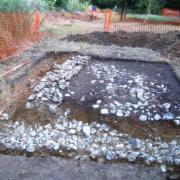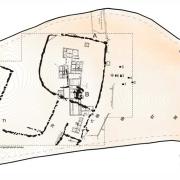2013 Excavations at Ashtead Roman Villa and Tileworks
The final main season of excavation on Ashtead Common was undertaken by the Society’s Roman Studies Group in August and September this year. The ground was very dry at first at the end of the long dry spell, making excavation difficult, but it did allow work in places that would usually have been under water (and indeed were at the end of the dig). The excavation was aimed principally at completing work on the area of the newly discovered building, the Lowther villa and the tile kiln(s).




